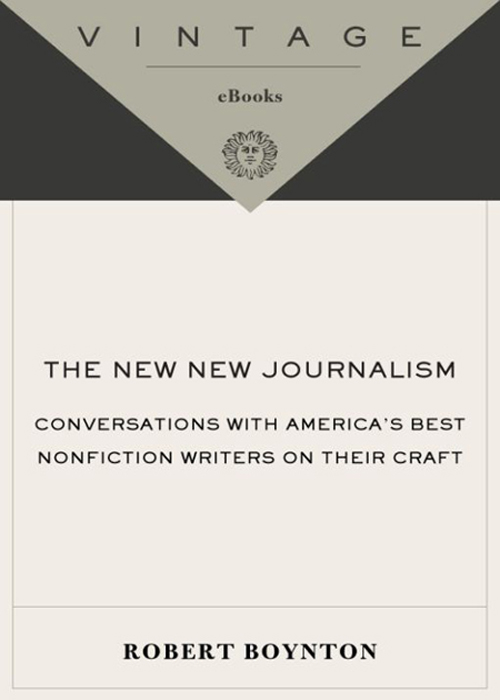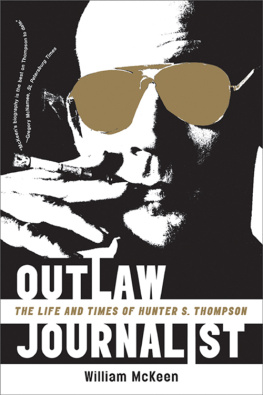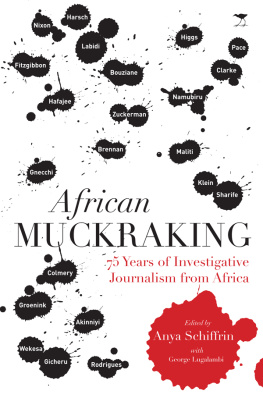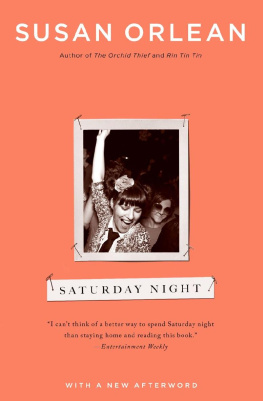

Table of Contents
To Helen
Acknowledgments
All books are collaborations, but this one has been more collaborative than most. I want to thank all the writers who talked to me for being so generous with their time and energy. The book benefited from the scrupulous research of Caroline Binham, Megan Costello, and Kris Wilton. Brooke Kroeger, Mitch Stephens, and Rick Woodward were kind enough to comment on the introduction, and Laura Marmor cast a critical eye on the entire manuscript. My friend and agent Chris Calhoun, and my editors at Vintage, Marty Asher and Lexy Bloom, have been supportive and enthusiastic throughout the project.
Acclaim for The New New Journalism
Fascinating and revealing insights into how writers really write.
Tina Brown
A must-read for any aspiring or experienced writer, The New NewJournalism gives nothing less than a recipe for better storytelling, fact or fiction.... Boynton offers a journalism education bar none.... To journalists, this book is crucial. To writing students, undoubtedly next years required reading. To avid readers of this genre, a light to illuminate the mystery of their best pleasure.
Lydia Reynolds, The Denver Post
Like a building contractor interviewing carpenters for a job, Boynton assesses his subjects based on what sort of tools he finds in their toolboxes.
Jack Shafer, The New York Times Book Review
If there has ever been a better book of author interviews, it has escaped my attention. [Boyntons] enormous labors show in the insightful introductions he writes about each of the nineteen authors, in the perceptiveness of his questions, in his determination to discover how the muckrakers of 100 years ago and the first wave of New Journalists forty years ago left their mark on these nineteen contemporaries, in the subtle ways he both instructs and entertains through the interviews he conducts.
Steve Weinberg, St. Petersburg Times
A compelling guide to the craft. Bob Cohn, Wired
A gold mine of technique, approach and philosophy for journalists, writers and close readers alike.
Publishers Weekly
Boynton offers a valuable primer for how strong journalism and the attention to craft practiced by his featured writers have created a literature of the everyday. The New New Journalism compels readers to seek alternatives to the current infotainment-soaked culture.
Belinda Acosta, The Austin Chronicle
A great compilation of astute interviews with a group of reporters who are both masterful story tellers and brilliant writers.
Rita Radostitz, Etude
A fascinating book that makes the reader want to go out and get every book the writers have written as well as those mentioned as sources of inspiration.
Booklist (starred)
Boyntons method offers a rare and quite nice example of asking simple questions about the complex task of good reporting and writing.... [F]or any journalist, new or otherwise, this book serves as a necessary reminder that what we do is both an art and a craft.
Christian Parenti, The Brooklyn Rail
Reading the interviews was like eavesdropping on a literary dinner party held in honor of these accomplished non-fiction writers. Boynton, as host, certainly asked the right questions. And each guest performed as expectedtheir answers were as fully-formed, interesting, and intriguing as their writing. They report. They decide. And we are grateful as readers.
Bill Katovsky, coauthor of Embedded: The Media at War in Iraq
An important contribution on contemporary writers for which I can think of no other similar book.... When the literary history is written on the post-new journalism, I think The New New Journalism will be central to that effort. I have no doubt that it will become a standard in the field.
John Harstock, author of A History of Literary Journalism:The Emergence of a Modern Narrative Form
Preface
I had neither studied nor taught journalism when I came to NYU. Instead, what I had to share with my students was a decades worth of experience writing for The New Yorker, The Atlantic Monthly, The New York Times Magazine, and other publications. But I was always acutely aware that what I was teaching were simply my methodsnot the best and (I hope) not the worst, but methods that were, for good or for ill, a reflection of me. Why should I assume they would work for anyone else? And ifas I believethe only possessions a writer has are his talent and idiosyncrasies, was it even wise to recommend my hodgepodge of journalistic practices to my students?
I resolved my moral quandary by explaining, at the beginning of each semester, that it isnt so important for a writer to use one particular method rather than another (although some are inherently superior). What is crucial, I told them, is that every writer have a methodof some kind: routines to cling to when everything goes wrong, rules to follow when youre blocked or frustrated. After all, there are an infinite number of ways to organize ones writing life. I had mine and knew other writers did, too. What were they? This book is my answer to that question.
The book grew out of my classes, during which I would invite in a journalist to discuss his work. What followed were conversations extended interviews, reallyon the process of writing: developing beats, coming up with ideas, interviewing, research, writing, rewriting.
The results were often fascinatingboth for my class and for myself (and for our visitors, who all confessed they, too, had no idea how their colleagues operated). Ren Weschler described playing with childrens blocks to organize his thoughts. Ron Rosenbaum explained why he (manually) typed and retyped each draft. Jane Kramer told of the elaborate meals she cooks while writing, her ideas simmering along with the ingredients.
In the conversations that follow, Ive tried to re-create the spontaneity and excitement of those classroom encounters. Each is the result of many hours of taped interviews, which I then transcribed and edited before giving the transcript to the writer to improve. The arc of each conversation is roughly the same, and follows a hypothetical work from conception to publication. The goal of this project was to find a way of talking about writingas opposed to the idea of writingthat was at once demystifying and edifying; to make an often baffling process become more tangible and, perhaps, more manageable.
A bibliography of each journalists work follows each conversation. For more information about their work and a complete bibliography of each journalists articles, visit www.newnewjournalism.com.
Introduction
In Tom Wolfes now famous introduction to The New Journalism (1973), he argued that nonfictionnot the novelhad become the most important literature being written in America today. From Wolfe, who had toiled in the shadow of the novel for decades, this was a startling pronouncement. Even more startling was Wolfes declaration that not just nonfiction in general, but journalism in particular, had become literatures main event. But as Wolfe celebrated the triumph of New Journalism, evidence of an even more formidable next stage in American literary evolution was already taking shape.
In the thirty years since Wolfes manifesto, a group of writers has been quietly securing a place at the very center of contemporary American literature for reportorially based, narrative-driven long-form nonfiction. These New New JournalistsAdrian LeBlanc, Michael Lewis, Lawrence Weschler, Eric Schlosser, Richard Preston, Alex Kotlowitz, Jon Krakauer, William Langewiesche, Lawrence Wright, William Finnegan, Ted Conover, Jonathan Harr, Susan Orlean, and othersrepresent the continued maturation of American literary journalism. They use the license to experiment with form earned by the New Journalists of the sixties to address the social and political concerns of nineteenth-century writers such as Lincoln Steffens, Jacob Riis, and Stephen Crane (an earlier generation of New Journalists), synthesizing the best of these two traditions. Rigorously reported, psychologically astute, sociologically sophisticated, and politically aware, the New New Journalism may well be the most popular and influential development in the history of American literary nonfiction.
Next page







